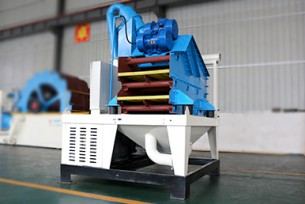Drilling pile mud treatment plan
 December.19,2024
December.19,2024
Build a sedimentation tank at the construction site, first discharge the sewage into the sedimentation tank, remove suspended matter and oil substances and neutralize them, and then discharge them into the river after testing to meet the discharge standards.
During the drilling and pouring process, a screen is used to separate small gravel, sand and other solid particles in the mud, and the mud is discharged to the first sedimentation tank, the second sedimentation tank, and the third sedimentation tank for full sedimentation. During the construction process, the first sedimentation tank, the second sedimentation tank, and the third sedimentation tank are cleaned in time by an excavator, and the cleaned sediment is transported to the evaporation tank, and after natural dehydration and solidification, it is transported to the storage yard or the waste dump.
For the abandoned mud water, flocculants are added to the mud water. Since mud water is a suspended liquid containing a certain amount of fine mud particles in water, polymer flocculants are a type of water-soluble polymers. When mixed with mud water, the flocculants have the functions of bridging, netting, adsorption and electrical neutralization, which can destroy the stability of mud water and make mud particles quickly condense and settle from the water, thereby achieving the effect of mud-water separation.
Treatment of mud-slag mixture:
The sediment removed from the sedimentation tank is transported to the evaporation tank and allowed to dehydrate and solidify naturally.
The dehydrated drilling slag is either transported to the storage yard or backfilled into the soil pit.
The dry mud formed after natural dehydration and solidification is backfilled in the abandoned mud pool on site. The sedimented mud slag is transported to the evaporation tank and the clean water is recycled.





